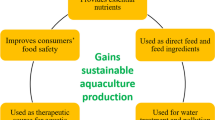Abstract
Arsenic (As) and selenium (Se) occur together in high concentrations in the environment and can accumulate in aquatic plants and invertebrates consumed by waterfowl. Ninety-nine pairs of breeding mallards (Anas platyrhynchos) were fed diets supplemented with As (sodium arsenate) at 0, 25, 100, or 400 μg/g, in combination with Se (seleno-DL-methionine) at 0 or 10 μg/g, in a replicated factorial experiment. Ducklings produced were placed on the same treatment combination as their parents. Arsenic accumulated in adult liver and egg, reduced adult weight gain and liver weight, delayed the onset of egg laying, decreased whole egg weight, and caused eggshell thinning. Arsenic did not affect hatching success and was not teratogenic. In ducklings, As accumulated in the liver and reduced body weight, growth, and liver weight. Arsenic did not increase duckling mortality, but it did decrease overall duckling production. Selenium accumulated in adult liver and egg, was teratogenic, and decreased hatching success. Selenium did not affect adult weight, liver weight, survival, onset of egg laying, egg fertility, egg weight, or eggshell thickness. In ducklings, Se accumulated in the liver and reduced body weight and growth, and increased liver weight. Selenium increased duckling mortality and decreased overall duckling production. Antagonistic interactions between As and Se occurred whereby As reduced Se accumulation in liver and egg, and alleviated the effects of Se on hatching success and embryo deformities. It was demonstrated that As and Se, in the chemical forms and at the dietary levels administered in this study, can adversely affect mallard reproduction and duckling growth and survival, and that As can alleviate toxic effects of Se.
Similar content being viewed by others
References
Braman RS, Foreback CC (1973) Methylated forms of arsenic in the environment. Science 182:1247–1249
Camardese MB, Hoffman DJ, LeCaptain LJ, Pendleton GW (1990) Effects of arsenate on growth and physiology in mallard ducklings. Environ Toxicol Chem 9:785–795
Daghir NJ, Hariri NN (1977) Determination of total arsenic residues in chicken eggs. J Agric Food Chem 25:1009–1010
Dubois KP, Moxon AL, Olson OE (1940) Further studies on the effectiveness of arsenic in preventing selenium poisoning. J Nutr 19:477–482
Durum WH, Hem JD, Heidel SG (1971) Reconnaissance of selected minor elements in surface waters of the United States, October 1970, Geol. Survey Circ. 643. U.S. Department of the Interior, Washington, DC, 1971, 49 pp
Heinz GH, Hoffman DJ, Krynitsky AJ, Weller DMG (1987) Reproduction in mallards fed selenium. Environ Toxicol Chem 6:423–433
Heinz GH, Hoffman DJ, Gold LG (1988) Toxicity of organic and inorganic selenium to mallard ducklings. Arch Environ Contam Toxicol 17:561–568
—, —, — (1989) Impaired reproduction of mallards fed an organic form of selenium. J Wildl Manage 53:418–428
Hill CH (1975) Interrelationships of selenium with other trace elements. Fed Proc 34:2096–2100
Hoffman DJ, Heinz GH (1988) Embryotoxic and teratogenic effects of selenium in the diet of mallards. J Toxicol Environ Health 24:477–490
Hoffman DJ, Heinz GH, LeCaptain LJ, Bunck CM, Green DE (1991) Subchronic hepatotoxicity of selenomethionine in mallard ducks. J Toxicol Environ Health 32:449–464
Hoffman DJ, Sanderson CJ, LeCaptain LJ, Cromartie E, Pendleton GW (1992) Interactive effects of arsenate, selenium, and dietary protein on survival, growth, and physiology in mallard ducklings. Arch Environ Contam Toxicol 22:55–62
Hothem RL, Ohlendorf HM (1989) Contaminants in foods of aquatic birds at Kesterson Reservoir, California, 1985. Arch Environ Contam Toxicol 18:773–786
Krynitsky AJ (1987) Preparation of biological tissue for determination of arsenic and selenium by graphite furnace atomic absorption spectrometry. Anal Chem 59:1884–1886
Lancaster RJ, Coup MR, Hughes JW (1971) Toxicity of arsenic present in lakeweed. New Zealand Vet J 19:141–145
Levander OA (1977) Metabolic interrelationships between arsenic and selenium. Environ Health Perspect 19:159–164
Moore SB, Detwiler SJ, Winckel J, Weegar MD (1989) Biological residue data for evaporation ponds in the San Joaquin Valley, CA. San Joaquin Valley Drainage Program, Sacramento, CA
Ohlendorf HM (1989) Bioaccumulation and effects of selenium in wildlife. In: Selenium in agriculture and the environment, SSSA Special Publication No. 23. Soil Sciences Society of America, Madison, WI
Ohlendorf HM, Hoffman DJ, Saidi MK, Aldrich TW (1986) Embryonic mortality and abnormalities of aquatic birds: Apparent impacts by selenium from irrigation drainwater. Sci Total Environ 52:49–63
Ohlendorf HM, Hothem RL, Welsh D (1989) Nest success, cause-specific nest failure, and hatchability of aquatic birds at selenium-contaminated Kesterson Reservoir and a reference site. Condor 91:787–796
Palmer IS, Thiex N, Olson OE (1983) Dietary selenium and arsenic effects in rats. Nutr Rep Int 27:249–258
Peterkova R, Puzanova L (1976) Effect of trivalent and pentavalent arsenic on early developmental stages of the chick embryo. Folio Morphologica 24:5–13
Phillips DJH (1990) Arsenic in aquatic organisms; a review emphasizing chemical speciation. Aquat Toxicol 16:151–186
Ratcliffe DA (1967) Decrease in eggshell weight in certain birds of prey. Nature 215:208–210
Rhian M, Moxon AL (1943) Chronic selenium poisoning in dogs and its prevention by arsenic. J Pharmacol Exp Ther 78:249
Shapiro SS, Wilk MB (1965) An analysis of variance test for normality (complete samples). Biometrika 52:591–611
Spehar RL, Fiandt JT, Anderson RL, DeFoe DL (1980) Comparative toxicity of arsenic compounds and their accumulation in invertebrates and fish. Arch Environ Contam Toxicol 9:53–63
Thapar NT, Guenthner E, Carlson CW, Olson CW (1969) Dietary selenium and arsenic additions to diets for chickens over a life cycle. Poult Sci 48:1988
Author information
Authors and Affiliations
Rights and permissions
About this article
Cite this article
Stanley, T.R., Spann, J.W., Smith, G.J. et al. Main and interactive effects of arsenic and selenium on mallard reproduction and duckling growth and survival. Arch. Environ. Contam. Toxicol. 26, 444–451 (1994). https://doi.org/10.1007/BF00214145
Received:
Revised:
Issue Date:
DOI: https://doi.org/10.1007/BF00214145




